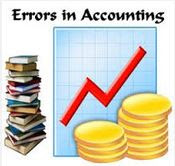Improving Cost Accounting Systems: Addressing Common Mistakes and the Need for Practical Knowledge
Introduction
Cost Accounting Systems play a vital role in cost
control and optimization for organizations. Despite the availability of
advanced approaches like Target Costing, Strategic Costs, and Activity Based
Costing, these systems often fall short in providing optimal conditions for
cost management. In this article, we will discuss the four biggest mistakes
commonly observed in Cost Accounting Systems and emphasize the need for
practical knowledge and firsthand experience in their development. We will draw
insights from experts such as Robert S. Kaplan and Peter Drucker to shed light
on the importance of understanding the ground realities of cost generation
processes.
Mistake 1: Lack of Focus on Cost Causes
One major flaw in many Cost Accounting Systems is
the limited emphasis on the causes of costs, instead focusing primarily on the
consequences. Costs are not isolated figures but are influenced by various
processes and sub-processes involved in production. Factors such as setup
procedures, production planning quality, raw material quality, preventive and
predictive maintenance, idle capacity, and others determine the final costs.
Kaplan (2005) emphasizes the significance of understanding cost drivers and
addressing them at their root cause for effective cost control.
Mistake 2: Excessive Focus on Processing Costs
Another common mistake made by Cost Accounting
System managers is an overemphasis on processing costs, including labor,
indirect labor, and other overhead costs. Many traditional cost systems fail to
adequately address several other categories of costs, such as raw materials,
packaging, quality and non-quality costs, maintenance costs, outsourced
services, logistics, and transportation. Drucker (1999) emphasizes the
importance of considering all cost components comprehensively to gain a
holistic view of the cost structure.
Mistake 3: Insufficient Emphasis on Non-Financial
Indicators
Accounting cost systems often concentrate solely on
financial values, disregarding non-financial indicators and other determining factors
that impact costs. While financial values are essential, a thorough evaluation
of non-financial indicators is crucial for effective cost control and
optimization. Factors such as production volume, production performance,
overall equipment efficiency (OEE), idle capacity, and scrap rates provide
valuable insights into cost management. Kaplan and Norton (1992) advocate for
the balanced use of financial and non-financial measures in their Balanced
Scorecard approach.
Mistake 4: Lack of Ground-Level Engagement
A prevalent mistake made by accounting cost
bureaucrats is their disconnection from the actual place where costs occur.
Spending years solely on cost calculations without visiting and observing the
cost generation processes hampers a comprehensive understanding of the factors
influencing costs. For manufacturing companies, frequent contact with the shop
floor is crucial, as it allows for firsthand knowledge of the production
processes. Moreover, engaging with suppliers and customers provides valuable
insights into cost drivers across the value chain. Kaplan and Anderson (2004)
stress the importance of direct contact with processes and agents involved in
cost generation to gain a deeper understanding of the underlying cost dynamics.
Conclusion
Cost Accounting Systems, despite their adoption of
advanced approaches, often fail to deliver effective cost control and
optimization due to several common mistakes. The lack of focus on cost causes,
excessive emphasis on processing costs, insufficient consideration of
non-financial indicators, and the absence of ground-level engagement are
significant shortcomings. To overcome these challenges, it is crucial for
authors and developers of cost accounting literature to possess practical
knowledge and hands-on experience with the operational aspects of
organizations. As Kaplan (1983) aptly stated, "Knowledge is useless unless
it is applied to practical activities." By integrating practical insights
into cost accounting practices, organizations can achieve enhanced cost control
and optimization, leading to improved overall performance.
Drucker, P. F. (1999). Management Challenges for
the 21st Century. HarperBusiness.
Kaplan, R. S. (1983). Measuring manufacturing
performance: a new challenge for managerial accounting research. The Accounting
Review, 58(4), 686-705.
Kaplan, R. S. (2005). The strategy-focused
organization: how balanced scorecard companies thrive in the new business
environment. Harvard Business Press.
Kaplan, R. S., & Anderson, S. R. (2004).
Time-driven activity-based costing. Harvard Business Review, 82(11), 131-138.
Kaplan, R. S., & Norton, D. P. (1992). The
balanced scorecard: measures that drive performance. Harvard Business Review, 70(1), 71-79.

Comentários
Postar um comentário